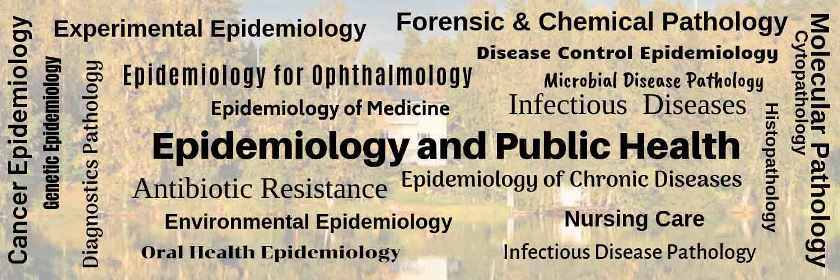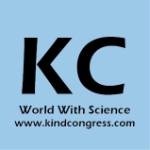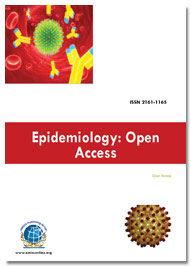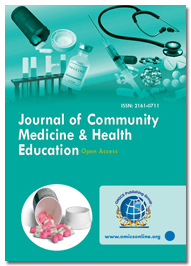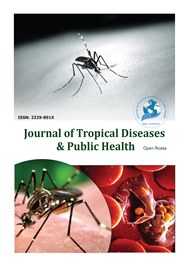Theme: An Emerging Trans Disciplinary & Interdisciplinary Evaluation
Euro Epidemiology 2019
- About Euro Epidemiology 2019
- Euro Epidemiology 2019 Topics
- Participant Guide
- Market Analysis of Epidemiology & Public Health
- Past Epidemiology Conference Report
- Associations and Societies of Epidemiology
- News and Updates on Public Healthcare
Euro Epidemiology 2019 is delighted to invite you all to the 9th European Epidemiology and Public Health Congress going to be held in Helsinki, Finland from 13-14 June 2019.
This international European and interdisciplinary conference will act as a forum for public health professionals, nutritionists, epidemiologists, pathologists, Biostatisticians, clinicians, business professionals, policymakers, researchers, academicians, and others to discuss and interchange their knowledge and experience on recent public wellbeing related concepts, encouraging the application of latest methods to study the large disease burden and highlighting existing opportunities in the field of medical evaluation, epidemiology and nutrition.
Euro Epidemiology 2019 brings professionals together from every corner of the world who share a commitment to reduce the global burden of diseases and disorders with the theme “An emerging trans disciplinary and interdisciplinary evaluation” anticipating for a huge number healthcare professionals, working in and beyond Molecular Pathological Epidemiology to share experiences and best practices through invited keynote, plenary lectures, symposia, workshops, and posters covering a wide range of topics and important issues which affect us all from the research to the experimental implementations.
We hope and expect Euro Epidemiology 2019 theme to inspire a number of researchers and look forward to discussing ideas, findings and synergies, in this International Academic Forum.
We look forward to seeing you at Helsinki, Finland for Euro Epidemiology 2019!
Track 1 Epidemiology of Molecular Pathology
Molecular Pathology deals with Anatomic Pathology and clinical pathology. Cancer and overwhelming disease can be viably assessed through Molecular Pathology. It includes the development of molecular and innate approaches. Nearness and nonappearance of protein can be checked by Molecular Pathology test. Multiplex PCR, DNA microarray, quantitative polymerase chain reaction (qPCR), in situ hybridization, DNA sequencing, counteracting operator based immunofluorescence tissue measures, molecular profiling of pathogens are a few strategies which are included in Molecular Pathology. The Association of Molecular Pathology is the active association conducting annual conference on Molecular Pathology in different countires.
Track 2 Cytopathology & Histopathology
Cytopathology is a communicative method that analyses cells from different body sites to decide the vector and character of the infection. Cytopathology is generally utilized on tests of free cells or tissue parts; in differentiating to histopathology, which study entire tissues. Cytopathologists are the medical doctors that perused a four-year pathology residency program. Cytopathologist spends one more year of training in a validated fellowship program. They are liable for the review and interpretation of cytopathology tests. Cytopathologic tests are often termed as smear tests because the samples shall smear across a glass microscope slide for successive staining and microscopic examination.
Histopathology is the detection and study of diseases of the tissues and involves examining tissues and/or cells under a microscope. Histopathology is the combination if pathology with histology and cytology and usually incorporates morbid dissections. Histopathologists are responsible for making tissue analyze and helping clinicians oversee a patient’s care. In clinical medicine, histopathology deals with the examination of a biopsy or surgical specimen by a pathologist.
Track 3 Medicine & Disease Control Epidemiology
Epidemiology and Preventive Medicine advantages wide access welfare mastery and aptitudes in epidemiology, biostatistics and information administration to offer assistance prevent sickness and improve quality of life. In present-day clinical practice, specialists by and by analyzing, treat and avoid infections utilizing clinical epidemiology. It has a wide ability to connecting clinical and health research.
The Epidemiology and Infection Control Unit uses epidemiologic strategies to screen and control communicable diseases. Epidemiology is the instrument to discover the reason for the health maladies happening in a populace. The community of tainted individuals was analyzed. It is characterized as the orderly consider of diseases and their control. It incorporates ponder of dissemination and assurance of risk components related to well-being in a populace and the compelling measure.
Track 4 Epidemiology of Chronic Diseases
Chronic conditions of a disease can be explained as a prolonged existence of the disease and causative organism in the host. The epidemiology of these chronic diseases addresses the aetiology, avoidance, conveyance, characteristic history, and treatment results of incessant wellbeing disorders, counting cancers-specifically like breast, colon, lung, prostate, ovary and pancreatic cancers, cardiovascular infections, diabetes, gastrointestinal and pulmonary malady, and corpulence.
The role of chronic disease epidemiology is not as widely recognized. One possible way to improve epidemiologic capacity is chronic disease prevention and health promotion programs. The chronic disease program managers and public health decision-makers may have a narrow understanding of basic chronic disease epidemiology functions.
Track 5 Epidemiology for Ophthalmology & Oral Health
Physical or complex wounds of the eye can be a serious danger to vision if not treated suitably and in a comfortable manner. Little metallic shots have to be suspected when a patient reports metal on metal contact, for example, by striking a metal surface. Intraocular outside bodies don't cause distress on account of the absence of nerve endings in the glazed cleverness and retina that can transmit torment sensations. In that capacity, general or crisis room specialists ought to elude cases including the back fragment of the eye or intraocular remote bodies to an ophthalmologist.
Studies directed in the field of oral health study of disease transmission give information on normal biological structures and on contaminations of the oral cavity, recognize populaces at a possibility of oral sickness or in expect of specific consideration, and think about regional, ecological, social, and get to likenesses and differentiations in dental consideration between peoples. Oral issues, checking awful breath, dry mouth, infection or cool wounds, TMD, tooth decay, throat or Oral Cancer, or thrush are for the most part treatable with suitable conclusion and care. Extraordinary oral and dental neatness can offer help foresee horrendous breath, tooth spoil and gum sickness and can offer help to any individual to keep teeth as we get more seasoned.
Track 6 Antibiotic Resistance & Diagnostics Pathology
Anti-microbial and comparable drugs, a combination is called as an antimicrobial operators, and they have been utilized for the last 70 years to treat patients who have infectious maladies. Anti-microbial resistance is due to the abuse and abuse of antimicrobials. Anti-microbial resistance has come to emergency note in numerous clinics around the world. The larger part is engulfed with methicillin-resistant Staphylococcus aureus (MRSA), and numerous multidrug-resistant (MDR) Gram-negatives. These drugs have been implemented so broadly and for so long to kill irresistible living beings.
Diagnostics pathology is a therapeutic division that is concerned with the diagnosis of a disease based on the laboratory analysis of substantial fluids such as blood and urine, as well as tissues, utilizing the apparatuses of chemistry, clinical microbiology, haematology and molecular pathology. It draws a wide number of research facility tests. In this pathology, tissues are inspected which is collected from the body and is dissected or inspected under a microscope. Cells of the cervix after a pap spread to check for confirmation of advancement or defilement.
Track 7 Genetic Epidemiology
Genetic epidemiology is the study of the role of genetic factors that investigates how genes produce disease in human communities. Genetic epidemiology uses biochemical markers in particular, genomic and epigenomic information just to increase the resolving power of traditional epidemiologic methods. Genetic epidemiology also studies the connected effects of genes and the environment and includes incorporation of the basic biology of the disease into its nonphysical models.
Genetic epidemiology can also be termed as the aetiology, distribution, and control of disease in groups of relatives and of inherited causes of disease in populations. It works as a quantifier that analysing the risk associated with genetic variation is a prerequisite for assessing the use of this new knowledge in medicine.
Track 8 Cancer Epidemiology
The epidemiology of cancer includes the study of factors and causing agents that result in malignancy. Cancer epidemiology is the analysis of the distribution, determinants, and frequency of cancer conditions in specific populations.
Experimental epidemiological studies show associations between risk factors and specific cancers mostly an aid to generate hypotheses about probable interventions that could reduce cancer occurrence or morbidity. Descriptive epidemiology concentrates on the tendency and abundance of disease in a given population. Analytic epidemiology deals with identifying sources and the predisposing risk associated with the development of a disease. Clinical epidemiology figures screening programs and evaluate the impact of blockage strategies on the overall outcome.
Track 9 Microbial & Infectious Disease Pathology
Microbiology, Immunology and Infectious Diseases Pathology focuses to propel research and instruction on irresistible and immunological disorders. In development to examine, the division is adequately occupied with undergraduate and also postgraduate guidance in the orders of microbiology and immunology. Irresistible diseases continue to have a tremendous effect at the prosperity of gatherings around the field from overall tuberculosis and HIV plagues, to the peril of safe microbes, to the mission of rising and as of late perceived pathogens.
Track 10 Environmental Epidemiology
Environmental Epidemiology is the study of the factors that impact the rate, power and geographic extent of mental prosperity. It is a department of the study of disease transmission considered about the disclosure of the natural exposures that add to or secure against wounds, sicknesses, developmental conditions, inefficiencies, and deaths; and conspicuous evidence of open prosperity and medicinal services exercises to administer the threats related with destructive exposures. Environmental exposures can be extensively sorted into those that are proximate, counting chemicals, physical administrators, and microbiological pathogens, and those that are distal, for example, budgetary conditions, atmosphere modify, and other expansive scale natural changes. Environmental Epidemiology research can instruct hazard evaluations; enhancement of rules and other hazard organization activities; and measures of the co-advantages and co-damages of methodologies outlined to reduce worldwide environment.
Track 11 Epidemiology of Infectious Diseases
The epidemiology of infectious disease includes consideration of the predominance, frequency and determinants of contaminations in populations. Irresistible diseases stay one of the most critical causes of dreariness and mortality around the world like HIV, human papillomavirus, other genital tract contaminations influencing women, and other sexually transmitted diseases. Infectious diseases extended to have a significant effect on public health across the globe. The world’s HIV and tuberculosis (TB) epidemics have the threat of resistant bacteria, to the challenge of emerging and newly recognized pathogens.
All constrain the need for innovative methods to detect such pathogens, to understand their pathogenesis, and to devise effective interventions for their prevention and control. The focus is wide, ranging from the search for ideal pathogens applying advanced molecular techniques to extended population-based studies to define transmission dynamics and spectrum of disease and survival.
Track 12 Epidemiology & Nursing Care
Nursing care focuses on a person’s health that is affected by many factors, including genetic makeup, lifestyle and environment. The points of Intensive and Critical Care Nursing are to advance brilliance of care of basically sick patients by master attendants and their expert partners; to give a universal and interdisciplinary gathering for the distribution, dispersal and trade of research discoveries, experience and thoughts; to create and improve the information, abilities, states of mind and imaginative deduction basic to great basic care nursing practice. Looking after more seasoned individuals with different medical issues can be precarious, notwithstanding for human services experts who have some expertise in Geriatrics, the therapeutic care of more established grown-ups. Mental-emotional well-being nursing is a forte inside nursing.
Track 13 Forensic & Chemical Pathology
Forensic pathology focuses on choosing the reason for death by dissecting a body. It is a utilization of the medical constitution. It is an approach to medical jurisprudence. A forensic pathologist is a medical doctor who has completed training in anatomical pathology and has eventually authoritative in forensic pathology The requirements for becoming a “fully qualified” forensic pathologist differ according to the countries. The forensic pathologist is responsible for explaining the reason and mode of death.
Chemical pathology (excessively known as clinical organic science) incorporates the biochemical examination of generous liquids, for example, blood, urine and cerebrospinal liquid. Chemical pathology concurrently conducts science and medicine. By discovering how and where the body's science has changed, ailments can be analysed and observed. Chemical pathologists are certified doctors who combine practical laboratory and clinical efficiencies. They use biochemical laboratory tests to determine disease and to guide patients.
Track 14 Experimental Epidemiology
An epidemiological investigation that utilises an experimental model to confirm a causal relationship suggested by observational studies is termed as Experimental Epidemiology. It deals with various factors relationships in determining the frequency and distribution of diseases in a community. There are three case types in experimental epidemiology: randomized controlled trial- for a new medicine or drug testing; field trial- conducted on those at high risk of contracting a disease; and community trial- research is conducted on an entire community or neighbourhood. The former one determines the efficacy of a particular treatment, while other trials may be preventive intervention.
Track 15 Epidemiology and Public Health
Epidemiology is a Greek-derived word that was defined as a quantitative discipline that works on the probability, biostatistics of mortality and morbidity based on developing and testing hypotheses pertaining to occurrence and prevention by causal reasoning that works as a tool for public health action to promote and protects the public health. It is a generalised topic to protect and improve the global healthcare.
In descriptive epidemiology, scientists make use of available data to identify health problems. In analytical epidemiology, scientists assess hypotheses about the association of risk factors with these problems. Epidemiology serves as the quantitative foundation for public health interventions and is a critical science for evidence-based medicine. The focus of the Division of Epidemiology, in the Department of Population Health, is to gain a new understanding of the inter-relationship of genetic and environmental factors impacting on human health, providing the scientific basis for conversion of this knowledge to public health action.
Participation Guidelines for Speakers and Delegates
For Speakers
-
Speaker slot is for 20-25 minutes including the queries session
-
Registered speaker will be provided with conference kit, free publication of the submitted abstract in conference proceedings
-
Submitted abstract should contain brief description (outline) on the research in 300 words, updated biography and recent photograph along with references and any 5 recent publication. Find the format at Submit Abstract page
Benefits
- 50% discount on registration price for upcoming conferences
- Chance to meet experts of your field
For Students & Young Researchers
- For YRF slot is for 15 minutes including the queries session and students are eligible to participate under Poster category
- Registered students will be provided with conference kit, free publication of the submitted abstract in conference proceedings
- Submitted abstract should contain brief description (outline) on the research in 300 words, updated biography along with references and recent publication (if you have any). Find the format at Submit Abstract page
- Poster format will be provided on your submitted email address once your poster gets accepted.
Participants who just wants to attend the conference to listent ot he speakers you need to get registered directly through the online registration portal
For group participations and bank payment contact us
All the participants will be awarded with certificate of participation and presentation (speakers and students) on the day of presentation.
Euro Epidemiology 2019 invites participants from all over the world to Helsinki, Finland. We took immense pleasure to welcome you to the “9th European Epidemiology and Public Health Congress” is going to be held during June 13-14, 2019 in Helsinki, Finland.
The organizing committee is harness up for an energizing and educational gathering program counting comprehensive lectures, symposia and workshops on different topics, notice presentations and distinctive ventures for individuals from all over the world. We welcome to connect us at the Euro Epidemiology-2019, where you will make certain to have an imperative association with researchers from around the world. All members of the Euro Epidemiology-2019 organizing committee expect meeting you in Finland.
Importance & Scope:
Epidemiology and Public Health is a Major Field in present-day medical Practice and Diagnosis. Pathology specimens currently number around 73,000 per year and on an average autopsies number around 120 per year. Around 600 specimens are prepared for electron microscopy every year counting over 350 renal biopsies per year. Around 102 conferences are going on worldwide. Euro Epidemiology 2019 conference will cover the new research Techniques and concentrates on Exhibition of modern Products presented by the Epidemiology Research facilities. Moreover covers the increase in require for advanced Public Health and Epidemiology. Epidemiology and Public Health brings essential and Clinical research into components of Disease.
Why Helsinki?
Helsinki is the capital city of Finland and most populous municipality. It is located in the Gulf of Finland with the population of 648,650. Helsinki forms the metropolitan area of Greater Helsinki, which has a population of almost 1.5 million. It is often appraised to be Finland's only metropolis; it is the world's northernmost metro area that contains more than one million people as well as the northernmost capital of an EU member state. Helsinki declared (Declaration of Helsinki) as a set of ethical principles regarding human experimentation developed for the medical community by the World Medical Association. It is widely considered as the backbone charter on human research ethics.
Global Market Report of Public Health:
Population Health Management Market 2018 Global Analysis, Growth, Trends and Opportunities Research Report forecasting to 2023” reports to its database. Considering the global analysis, growth, trends and opportunities research report, the market for Population health management is expected to reach $44.37 billion by the end of the forecast period growing at an approximate CAGR of 21.2%.
Market Analysis of Public Health & Epidemiology
The healthcare analytics reached $7.19 billion in 2016 and it is forecasted to grow at a CAGR of 24.0% to reach nearly $16.97 billion in 2020 from nearly $8.91billion in 2017. This analysis of global market trended with the data from 2016, estimates for 2017, and projections of CAGRs through 2020. The factors that drive the market of public health and epidemiology are the introduction of federal healthcare policies, increased focus on data collection and analysis for better customer service, progress in clinical outcomes, rapid technological advances and the emergence of social media.

Global Market Report of Molecular Pathology
Molecular Pathology deals with Anatomic Pathology and clinical pathology. Cancer and overwhelming disease can be viably assessed through Molecular Pathology. The global market for Molecular pathology through for cancer stem cells will grow from $745 million in 2017 to $1.9 billion by 2022 with a compound annual growth rate (CAGR) of 21.2% for the period of 2017-2022. The factors that affect the growth of molecular pathology are analysed based on the based on market share, disease type, and region.

Market Analysis of Epidemiology of Chronic Diseases
The global market for companion diagnostics for chronic diseases epidemiological studies reached nearly $4.4 billion in 2016. This market is expected to grow from nearly $5.5 billion in 2017 to $25.1 billion in 2022 at a compound annual growth rate-CAGR of 35.5% for forecasted period 2017 to 2022. The growth is being expected due to the higher growth in immuno-oncology, growth in supporting tests using IHC, PCR tests has been updated as larger than previous anticipations, NGS growth a little slower than previously expected, due to slower clinical adoption, and Growth in the liquid biopsy.

Market Reports of Diagnostics Pathology
The global transplant diagnostics market was valued at $563.38 million in 2016 and is estimated to grow at a CAGR of 9.8% from 2017 through 2022 and is expected to be $989.20 million. The global market for exosome diagnostics and therapeutics is projected to grow from $16.1 million in 2016 to $111.8 million in 2021, a five-year CAGR of 47.3%. The global POC diagnostics market was valued at nearly $19.3 billion 2016. This market is expected to grow to $28.3 billion in 2021 at a CAGR of 8.0% for 2016-2021. The global market for companion diagnostics reached nearly $4.3 billion in 2016 and expected to grow nearly $17.6 billion in 2021 at a CAGR of 32.3% for 2016-2021. The global in vitro diagnostics (IVD) market should reach $102.4 billion by 2022 from $74.1 billion in 2017 at a CAGR of 6.7%, from 2017 to 2022. The global molecular diagnostics market was valued at almost $27.46 billion in 2016. The total market is projected to grow at a CAGR of 12.5% from 2017 through 2022 to reach nearly $30.89 billion by 2017 and $55.64 billion by 2022.

Market Reports of Epidemiology and Infectious Diseases
The global market for infectious disease treatments totalled $64.8 billion in 2017. The market should total $99 billion by 2022, growing at a compound annual growth rate (CAGR) of 8.9% from 2017 to 2022. The growth driving factors of infectious diseases are the growth in demand for newer pharmaceutical treatments, vaccines, and environmental products, Examination of technological developments, future trends, and emerging opportunities.

Market Reports of Epidemiology & Nursing Care
The global market for elder care technologies expected to grow from $5.7 billion in 2017 to $13.6 billion by 2022 at a CAGR of 19.2% from 2017 through 2022. The factors that drive the growth in this market field include the growing number of seniors, increasing life-expectancy, skyrocketing healthcare costs, growing shortage of healthcare professionals and caregivers and seniors’ preference to age in place.

Conference Highlights
Molecular Pathology, Cytopathology and Histopathology, Epidemiology and Medicine, Epidemiology and Chronic Diseases, Epidemiology and Eye Injury, Epidemiology and Antibiotic Resistance, Forensic Pathology & Chemical Pathology, Microbial Pathology, Infectious Disease Pathology, Epidemiology & Diseases Control, Environmental Epidemiology, Epidemiology and Infectious Diseases, Oral Health & Hygiene, Diagnostics Pathology, Epidemiology and Nursing Care, Epidemiology and Public Health
Who should attend?
Epidemiologists, Healthcare Professionals, Academicians, Biotechnology Experts, Biostatistics Analysts, Physicians, Medical Practitioners, Health care administrators, Pathologists, Gynaecologists, Health Authorities, Local Public Health Organizations, Medical Residents, Therapeutic experts, Doctors, Therapists, Public Wellbeing Educators, Enrolled Nurses, Scientists, Public Health Investigators
Target Audience
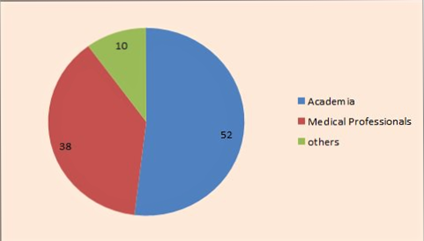
Related and Upcoming Conferences of Epidemiology
11th International Conference on Epidemiology & Public Health, September 26-27, 2019, Copenhagen, Denmark | 2nd European Conference on Epidemiology & Public Health, July 04-05, 2019, Paris, France | 7th Epidemiology and Public Health Conference, June 17-18, 2019, Dubai, UAE | 8th World Congress on Public Health, Epidemiology & Nutrition, July 10-11, 2019, Osaka, Japan | 8th International Conference on Epidemiology & Public Health, October 23-24, 2019, Tokyo, Japan | 2nd World Congress on Public Health, Epidemiology and Nutrition, April 15-16, 2019, Milan, Italy | Republic | 18th International Conference on Pathology & Cancer Epidemiology, October 21-22, 2019, Rome, Italy | Canadian Public Health Association Conference, 28-31 May 2019, QC, Canada | International Conference on Public Health and Well-being 2019, 4-5 Apr 2019, Negombo, Sri Lanka | Epidemiology and Biostatistics at the Nexus of Complex Health Challenges, 13-15 May 2019, Ontario, Canada | 27th International Epidemiology in Occupational Health Conference, 30th April to 2nd May 2019, Aotearoa, New Zealand
We would like to thank all of our wonderful keynotes, speakers, conference attendees, students, associations, media partners, exhibitors and guests for making Epidemiology 2018 a successful event.
Conference Series hosted the 8th International Conference on Epidemiology & Public Health during September 17-19, 2018 at Holiday Inn Rome, Italy with the theme “Difficulties encountered and solutions adopted in the fields of Epidemiology and Public Health”. Benevolent response and active participation were received from the Editorial Board Members of supporting International Journals as well as from the leading academic scientists, researchers, research scholars, students and leaders from the fields of Epidemiology and Public Health, who made this event successful.
The conference was marked by the attendance of young and brilliant researchers, business delegates and talented student communities representing more than 48 countries, who have driven this event into the path of success. The conference highlighted through various sessions on current retroviral research.
Epidemiology 2018 witnessed an amalgamation of peerless speakers who enlightened the crowd with their knowledge and confabulated on various new-fangled topics related to the fields of Epidemiology and Public Health
The meeting was carried out through various sessions, in which the discussions were held on the following major scientific tracks:
-
Epidemiology and Public Health
-
Epidemiology and Medicine
-
Epidemiology and Infectious diseases
-
Epidemiology and Antibiotic Resistance
-
Epidemiology and Chronic diseases
-
Epidemiology and Genomic Research
-
Epidemiology and Nursing Care
-
Epidemiology and Anthropology
-
Epidemiology and Respiratory diseases
-
Epidemiology and Zoonotic diseases
-
Epidemiology and Veterinary
-
Epidemiology and Psychiatric
-
Perinatal Epidemiology
-
Epidemiology and Cancers
-
Epidemiology and Cardiovascular Disease
The conference was embarked with an opening ceremony followed by a series of lectures delivered by both Honorable Guests and members of the Keynote forum. The adepts who promulgated the theme with their exquisite talk were;
Ø Christolyn Raj, The University of Melbourne, Australia
Ø Ray M Merrill, Brigham Young University, USA
Ø Dawid Nidzworski, SensDx Ltd, Poland
Ø Roberto Antonio Flores, National University of Santiago del Estero, Argentina
Ø Cristina Stasi, University of Florence, Italy
Ø Peizhong Peter Wang, Memorial University of Newfoundland, Canada
The event enlightened various arenas of Health care, with plenary lectures from the speakers of various universities and organizations like
Juliet Addo, GlaxoSmithKline, UK
Damien Mouly, French National Public Health Agency, France
Angela Ragin-Wilson, Agency for Toxic Substances and Disease Registry in Atlanta, Georgia
Ana Pinto de Oliveira, Arnaldo Sampaio Public Health Unit, Portugal
Elizabeth Irvin-Barnwell, Agency for Toxic Substances and Disease Registry, Colorado
Adélia Dalva da Silva Oliveira, Uninovafapi University Center, Brazil
John Heironimus, Fleming Scientific, USA
Kawthar Al-ajmi, University of Manchester, UK
Ana Pinto de Oliveira, University of Algarve, Portugal
Yasemin Saglan, Eskisehir Odunpazari District Health Directorate, Turkey
Ramazan Saglan, Eskisehir Osmangazi University, Turkey
Cicilia Windiyaningsih, University of Respati, Indonesia
Amal Jamee Shahwan, Limoges, France
Soad Redwane, Ministry of Health, Morocco
Ankita Shah, Indian Institute of Technology, India
We are also obliged to various delegate experts, company representatives and other eminent personalities who supported the conference by facilitating active discussion forums. We would like to thank the Organizing Committee Members for their gracious presence, support, and assistance towards the success of Epidemiology 2018.
For more information please visit: https://euroepidemiology.conferenceseries.com/
South & North America
International Society for Environmental Epidemiology, International Society for Pharmacoepidemiology, International Epidemiological Association, Canadian Public Health Association, Epidemiology - American Public Health Association, Michigan Public Health Association, Saskatchewan Epidemiology Association, International Dermato-Epidemiology Association , Texas Public Health Association, Alberta Public Health Association, Public Health Association of BC, American Epidemiological Society, Society for Healthcare Epidemiology of America, The Infectious Diseases Society of America, American Thoracic Society - General Epidemiology, International Joint Policy Committee of the Societies of Epidemiology, International Genetic Epidemiology Society, The Society for Epidemiologic Research, Canadian Society for Epidemiology and Biostatistics, American Society for Nutrition, The International Society of Travel Medicine, International Association for Adolescent Health, Southern California Public Health Association, Society for Health Communication, North Carolina Public Health Association, Virginia Public Health Association, South Carolina Public Health Association, Infectious Diseases Society of America
Europe
The European Public Health Association, German Association for Medical Informatics, Biometry and Epidemiology, Spanish Society of Epidemiology, Origin of London Epidemiological Society, Royal Society of Medicine-Epidemiology & Public Health Section, International Society for Clinical Biostatistics, International Society of Geographic and Epidemiologic Ophthalmology , Swiss Society for Public Health, World Federation of Public Health Associations, UK Public Health Association, Royal Society for Public Health, Association of Directors of Public Health , British Association for Community Child Health, School and Public Health Nurses Association, Association for Young People's Health, Society for Social Medicine & Population Health, British Association for Sexual Health and HIV, European Society of Integrative Medicine, The German Public Health Association, Federation of European Nutrition Societies
Middle East & Africa
Egyptian Society of Epidemiology, Turkish Public Health Association, The Society of Endocrinology and Metabolism of Turkey, Emirates Medical Association, Turkish Medical Informatics Association,, Public Health Association of South Africa, Southern African Clinical Epidemiology Association, Actuarial Society of South Africa, The Cancer Association of South Africa, Southern African Society for Veterinary Epidemiology & Preventive Medicine, South African Public Health Medicine Association, South African Medical Research Council, African Nutrition Society, South African Statistical Association, African Epidemiological Association, Algerian Society for Public Health, Society for Public Health Professionals of Nigeria, Society for Quality in Health Care in Nigeria, Association for Reproductive and Family Health, Epidemiological Society of Nigeria, Nigeria Centre for Disease Control, Egyptian Society of Epidemiology
Asia Pacific
Asia Pacific Society of Infection Control, The Australasian Epidemiological Association, Indian Association of Epidemiologists, China Preventive Medicine Association, Epidemiological Association of Bangladesh, Japan Epidemiological Association, South Asian Public Health Association, Central Asian Public Health Association, Indian Association for Social Sciences and Health, Asian Health Literacy Association, Asian Society for History of Medicine, Public Health Association of Australia, The China Health Policy and Management Society, Shanghai Medical Treatment and Public Health Association, China Occupational Safety & Health Association, Japan Medical Association, Asia-Pacific Academic Consortium for Public Health, Asia Pacific Society of Infection Control, Asia-Pacific Society for Alcohol and Addiction Research, Japan Public Health Association
Tuberculosis research reports- TB drugs increases susceptibility to Mtb-reinfection
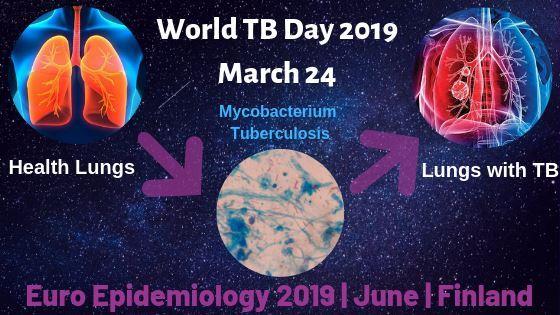
Tuberculosis treatment in recent times should give permanent cure for TB infection which is being caused by Mycobacterium tuberculosis (Mtb). But the TB research was worried after knowing that there is no prevention for reinfection. Here are the reasons why?
To know about these details visit Mtb reinfection and to share your scientific experiences on such conditions take part in workshops and symposium carried on rare diseases (Tuberculosis is said to be one of the rare diseases). We believe that Euro Epidemiology congress will give some details on advanced research on these deadly and dangerous diseases and controllable disorders for better human healthcare.
Cancer Epidemiology-A brief study for better Healthcare
The Institute for Quantum Computing (IQC) from University of Waterloo’s researchers has developed a new quantum sensor that could mean recognizable advancements in 3D imaging and monitoring for cancer patients.
The team has developed a sensor which is semiconductor nano-wires based that is able to detect single light particles with high resolution and speed. The new sensor’s efficiency is spectacular over a wide range from the ultraviolet to near-infrared. This sensor can improve quantum communication and has better sensing capabilities say the researchers. The researchers said that this technology can reach a significant development in long range high-resolution 3D-imaging, singlet-oxygen-particle detection, quantum communication. These are useful for dose monitoring in cancer treatment.
For more details Cancer Epidemiology
New device to Isolate Cancer cells from Blood
Researchers from Chicago and Australia belonging to University of Illinois and Queensland University of Technology respectively have developed a device which is capable of isolating the individual cancer cells from affected blood samples. It is called as microfluidic device and it works by separating the various cell types found in blood according to their size. The device may one day enable rapid, cheap liquid biopsies to help detect cancer and improvise targeted treatment plans.
In liquid biopsy the cancer could be detected through the sample drawn from the patient by the ability to isolate cancer cells successfully. Liquid biopsy is also useful in tracking the efficacy of chemotherapy and to detect cancer through traditional techniques in brain and lungs.
More details are given in Microsystems & Nanoengineering
Do eating Cashew Nuts leads Weight Gain?
Cashews are said to be leading to weight gain if we eat in higher quantities. Actually cashews are rich sources of copper, iron, magnesium, selenium, and phosphorus and they have many health benefits because if their nutritional values. Cashews have high amount of healthy fatty acids and antioxidants. Including cashews in regular diet has been linked to improving cardiovascular health, lowering cholesterol levels, and even weight loss and hence it can be declared as a myth that eating cashew leads to weight gain.
Unprocessed cashews are poisonous and one cannot eat the raw cashews, the processed nuts make for a delicious, healthy snack that give above mentioned benefits to your health. Cashews are not toxic but the shell around them contains of toxic oils said to be urushiol which causes dermatitis. This agent is acidic in nature and also causes skin rashes, itching, and blisters when it comes in contact with the skin.
What do cashews contain?
Cashews reported to contain dietary fiber, vitamin K, a range of healthy minerals like copper, magnesium, and manganese, and omega-3 fatty acids. Cashews are more beneficial than peanuts as they contain higher quantities of Omega-3fatty acids than omega-6fatty acids. Cashews are also a good energy source and it gives about 10% of your daily protein that your body needs when we take 18 medium-sized cashew nuts as it contain about 5 g protein.
Weakness due to rare cancer can be exploited
The Rockefeller University researchers announced the discovery of a rare tumor type which is not able to synthesize cholesterol, and a molecule without cholesterol can't survive. Those cells will become dependent on cholesterol from any other source, and this dependency strategy of the cancer cell helps us to design therapies to block cholesterol uptake from their environment.
Cancer cells are impressive in their relentless growth, sidestepping in the aging process as they become immortal, and avoid the immune system's persistent attacks. But in the process of acquiring such superior powers, the cells must occasionally suppress other, more unusual activities--including the ability to produce certain nutrients. In rare cancers they lose the ability to make vital nutrients for their survival. As a first line of treatment against these cancer cells, doctors give patients a drug (inactive enzyme) known as asparaginase, which breaks down the amino acid bond from the cancer cell, removing it from the blood. Without access to its environment for the nutrient, the cancer cells die.
To read more about the observation follow Nature.
Find the changes in Human cells to fight back Diabetes
A hope in diabetic patients, researchers revealed the ordinary changes in human cells from their original function. The researchers are from researchers at the University of Bergen and their international partners at Université de Genève, Harvard Medical School, Universiteit Leiden and the Oregon Stem Cell Center.
This latest study shows the cells are more able to differentiate into many different cells than expected earlier. These researchers were able to trigger the changes in signals of human cells so as to change their original function by themselves. Through this study they influenced the glucagon producing cells in pancreas to release insulin instead. As ever these experiments were carried on mice and they became negative to diabetes. The additional advantage of this study is the pancreatic cells which got manipulated for insulin production are also able to be resistant against the insulin-producing cells in diabetic patients.
How to overcome Stress?
Stress is very common for human beings as so in microorganisms said by some researchers from Sweden, a study driven through device to study how single biological cell reacts to stress. Analysing these responses we could develop more effective drugs for serious diseases. Yeast and bacteria have very same systems when it comes to response to stress, meaning the results are very interesting from a medical zone.
All living organisms can experience stress during some complex situations. Cells and microorganisms have complicated systems to monitor how they adapt to new circumstances. They can change their own structure by inviting or releasing many different substances into the surroundings. Due to the complexity of these molecular processes, understanding these systems is a difficult task.
For more details visit Natural Communications
Know more details on PROSTATE CANCER- Advancements on research through 2010
According to the 2010 reports, the National Comprehensive Cancer Network guidelines of US suggested that patients with low-risk and stable prostate cancer could be managed or treated with active surveillance (AS) or watchful waiting (WW) as these procedures are considered as safe and useful alternatives to aggressive surgeries like radiation therapy to remove the prostate gland. The research that was carried on almost 164,760 men for prostate cancer management during 2010-2015 obtained data from the national database of cancer studies statistics through Epidemiology, surveillance and End reports. The AS and WW applications got increased from 14.5 in 2010 to 42.1 in 2015. Prostate cancer is the second most abundant cancer among men all over the globe. As per the World Cancer Research Fund, there’re 1.3 million newly diagnosed cases of prostate cancer in 2018 and National Cancer Institute states that in the US 11.2 percent men are at risk of getting prostate cancer at some point in their whole life-span.
Best way to stay Detoxified: Intake of Vitamin C the best Anti-Oxidant
Vitamin C was discovered as Anti-scurvy agent in hundreds of years ago in Europe because of its anti-oxidant property. Vitamin C helps is removal of all waste and toxic materials from the human body hence detoxify the body. Intake of food items rich in Vitamin C not only helps in detoxification besides treats common cold, wound healing, dentistry medicine, blood purification, depression, and skin disorders. Some sources that are rich in Vitamin C are Citrus fruits, Green Tea, Bell peppers, Broccoli, kiwis, papaya.
Conference Highlights
- Epidemiology of Molecular Pathology
- Cytopathology & Histopathology
- Medicine & Disease Control Epidemiology
- Epidemiology of Chronic Diseases
- Antibiotic Resistance & Diagnostics Pathology
- Experimental Epidemiology
- Environmental Epidemiology
- Forensic & Chemical Pathology
- Epidemiology of Infectious Diseases
- Microbial & Infectious Disease Pathology
- Epidemiology & Nursing Care
- Cancer Epidemiology
- Epidemiology for Ophthalmology & Oral Health
- Epidemiology and Public Health
- Genetic Epidemiology
- Social Epidemiology
To share your views and research, please click here to register for the Conference.
To Collaborate Scientific Professionals around the World
| Conference Date | June 13-14, 2019 | ||
| Sponsors & Exhibitors |
|
||
| Speaker Opportunity Closed | Day 1 | Day 2 | |
| Poster Opportunity Closed | Click Here to View | ||
Useful Links
Special Issues
All accepted abstracts will be published in respective Our International Journals.
- Epidemiology
- Journal of Community Medicine & Health Education
- Journal of Tropical Diseases & Public Health
Abstracts will be provided with Digital Object Identifier by


